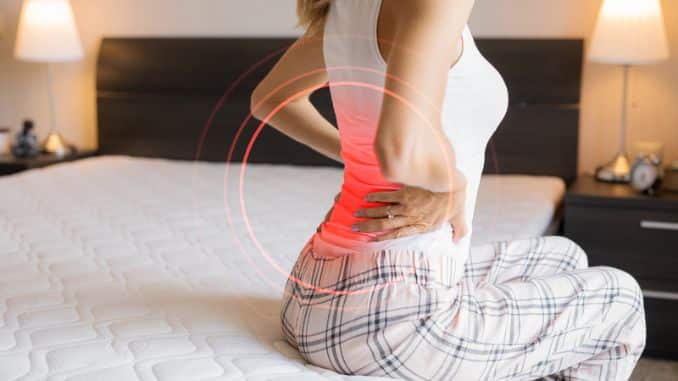Most people [1] will experience serious low back pain at some point, but most cases get better with little treatment, often aided by stretches for back pain relief and back pain relief for life exercises.
Back pain is one of the most common types of pain we experience. It affects people of all ages, and then it can be extremely debilitating in some cases.
The good news is that you can do several different things to help manage your back pain and prevent it from becoming too problematic.
Back pain stretches are a great way to ease your muscles after sitting for long periods of time or to counteract the effects of daily stressors on the body.
These two best back pain stretches have multiple benefits for the body, such as reducing stress and tension, increasing flexibility, releasing endorphins (natural painkillers), and improving posture.
Regular exercise, especially strengthening and stretching, can help reduce chronic pain by improving flexibility, strengthening core muscles, and relieving tension in areas like the hip flexor muscles.
1. Cat-Cow Stretch
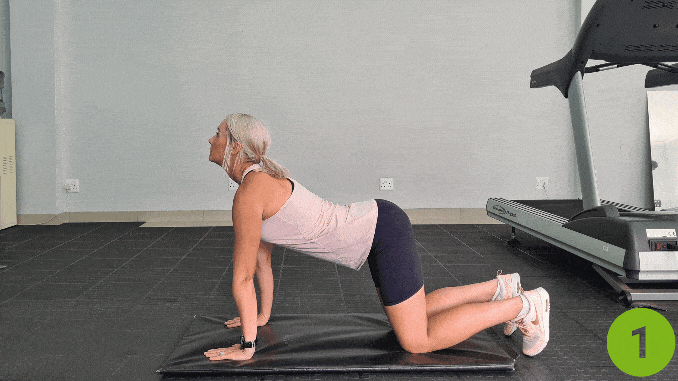
How to Do:
- Begin in a 4-point position on the floor with your hands beneath your shoulders and your knees under your hips.
- Inhale and contract your abdominal area. Exhale and slowly round out your mid-back as you drop your head downward.
- Then, alternate by inhaling as you slowly lift your head and then arch your mid-back, incorporating back pain relief for life exercises.
- Repeat the movement, alternating directions.
2. Child’s Pose
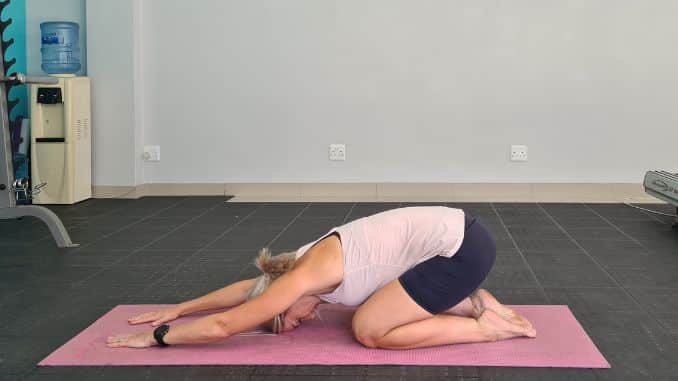
How to Do:
- Begin in an upright kneeling position on the floor with your knees wider than shoulder-width apart.
- Tighten your abdominal area during back pain relief exercises.
- Shift your hips back to your feet, lower your upper body, and extend your arms overhead.
- Lower your forehead to the floor, relaxing your mid-back area for a light stretch, and incorporating back pain relief for life exercises
- Take several deep belly breaths, in through your nose and out through your mouth.
- Again, relax and return to an upright sitting position.
3. Pelvic Tilts
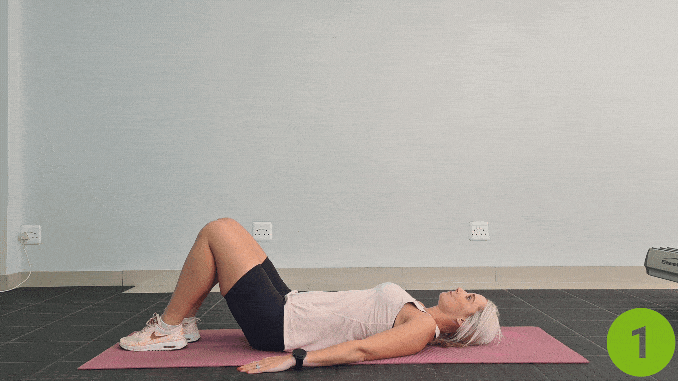
How to Do:
- Lie on your back on the floor with your knees bent and feet flat on the floor.
- As part of your back pain relief exercises, slowly roll your pelvis backward as if you were flattening out your spine.
- Hold this position for several deep belly breaths, in through your nose and out through your mouth.
- Slowly return to the starting position with stretches for back pain relief.
4. Knee-to-Chest Stretch
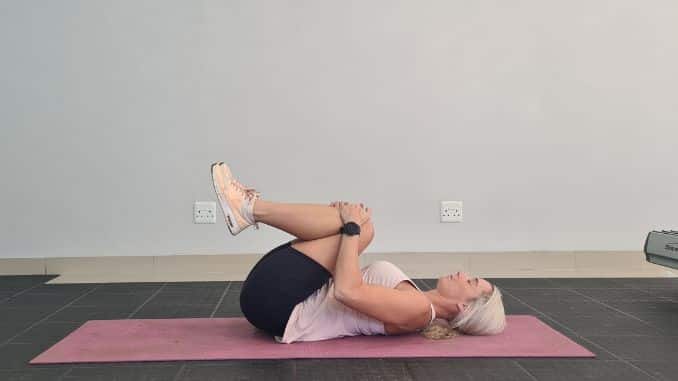
How to Do:
- Lie on your back on the floor with your knees bent and your feet flat on the floor for back pain relief for life exercises.
- Bring both knees to your chest and hold onto your knees with both arms, looking for a light stretch in the lower back and glutes.
- Hold the position for several belly breaths, in through your nose and then out through your mouth.
5. Bridge
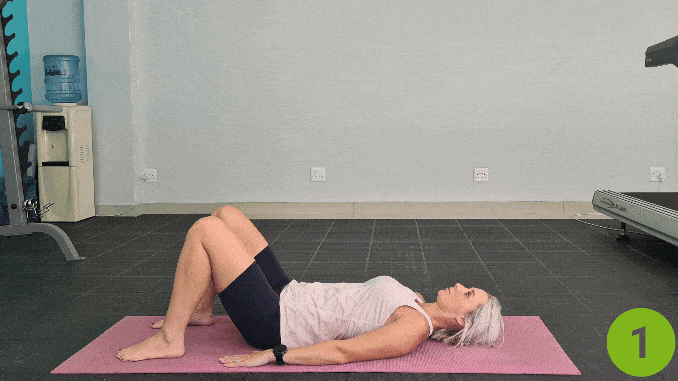
How to Do:
- Lie on your back on the floor with your knees bent and your feet flat on the floor, relaxing your upper body.
- After that, place your arms at your side. Contract your abdominal area, then push from your heels to lift your hips.
- Maintain good alignment with your head, shoulders, hips, and knees during back pain relief exercises.
- Hold this position for several deep belly breaths, in through your nose and out through your mouth.
- Relax and return to the starting position.
6. Seated Forward Bend
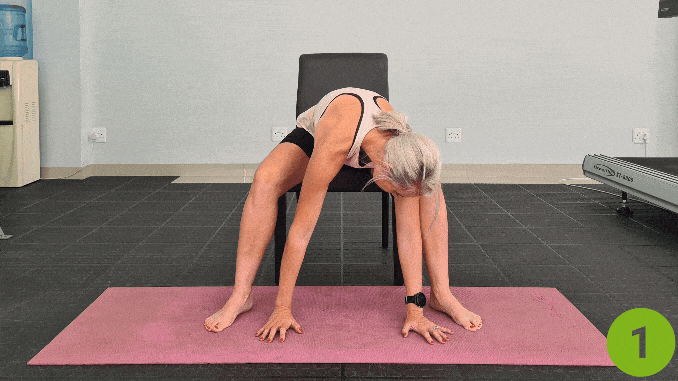
How to Do:
For this exercise, utilize the use of a chair, for support if needed.
- Begin in an upright sitting position on the chair, with your knees bent and feet flat on the floor wider than hip-width apart, maintaining good alignment with your upper body.
- Engage your core.
- Hinge through your hips to bend your upper body down while keeping your back straight and then your hands reaching to the floor.
- Then, slowly move your body from left to right for 5-10 repetitions.
7. Spinal Twist
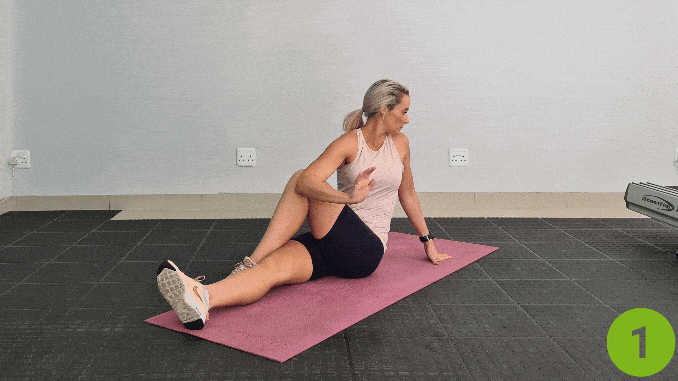
How to Do:
- Begin in an upright sitting position on the floor with your legs straight, maintaining good alignment with your head, shoulders, and then hips.
- For back pain relief exercises, bend your left leg while keeping your right leg straight.
- Cross your left foot over to your right leg, and anchor your right elbow on your bent knee while you place your left hand at the back for support.
- Engage your core, then twist your upper body to the side as you look over your left shoulder.
- Hold the position for several deep belly breaths, in through your nose and then out through your mouth.
- Relax and then repeat the movement on the opposite side.
8. Downward Dog Into Plank
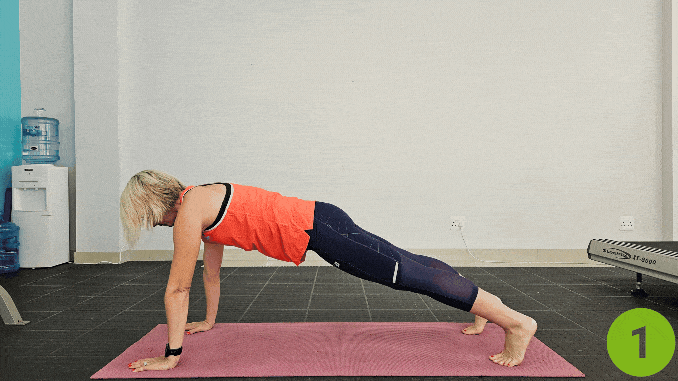
How to Do:
- Start in a push-up or straight-arm plank position.
- Tighten your abdominal area.
- Legs are both hip-width apart.
- Push through the arms, slowly pull your hips backward, hold that position for a second, and then go back into the start position.
- Again, repeat the movement.
- Start off with one set of 5 reps.
- Perform this exercise in a smooth, controlled movement with a good stop at the end position for 1 to 2 seconds.
- The intensity is light.
This exercise mainly focuses on the core abdominal area and works on the flexibility of the shoulders and then the core of the shoulder blade muscles.
9. Seated Spinal Twist
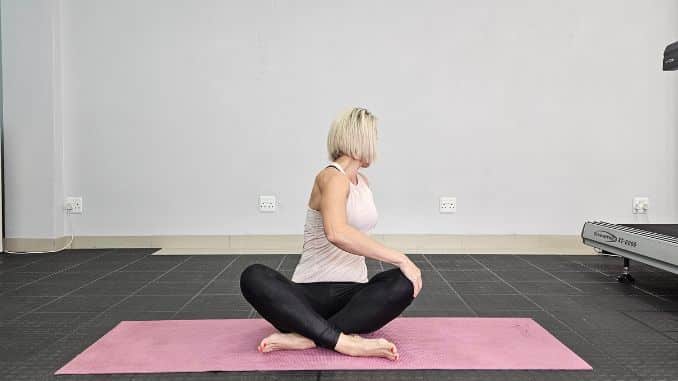
How to Do:
- Begin the exercise in a nice and upright cross-legged sitting position.
- Rotate through the shoulders, grab your right knee with the left hand, and then bring the other hand behind you.
- Then, pull a little bit further.
- Go back to the start position, and then repeat the movement to the opposite side.
- Start off with one set of 5 reps.
- After that, perform this exercise in a smooth, controlled movement with a good stop at the top position.
- The intensity is light.
This exercise mainly targets the core abdominal area and works on the hamstrings and then glutes.
10. Half-moon Pose
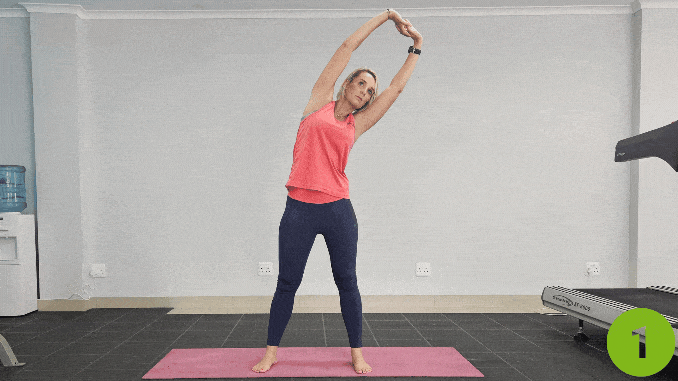
How to Do:
- Begin in an upright standing position with your feet shoulder width part, maintaining good alignment with your head, shoulders, hips, and then legs.
- Raise your arms overhead, and interlace the fingers with palms facing up.
- Engage your core and bend to one side as far as you can while keeping your spine straight.
- Hold the position for a couple of seconds. Repeat the movement on the opposite side.
To intensify the stretch, you may keep your feet closed together as you bend your upper body to the side.
11. 90/90 Hip Flexors Stretch
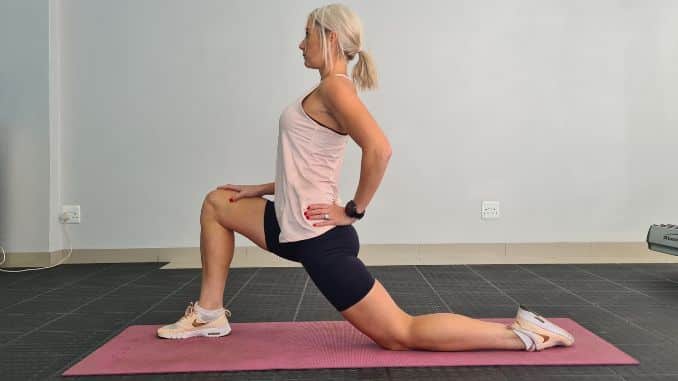
How to Do:
- Begin in an upright standing position with your feet shoulder-width apart, maintaining good alignment with your head, shoulders, hips, and then legs.
- Tighten your abdominal muscles for back pain relief for life exercises.
- Take a big step back with one foot, lower your back knee to the ground, and hold the position for stretches for back pain relief.
- Your front knee should be bent directly over your ankle, moving both knees into 90-degree angles.
- Shift your hips forward and hold this position for 20 seconds.
- Return to the starting position and repeat the movement on the opposite side.
- Start with 1 set of 2 repetitions on each side, holding for 20 seconds.
Why does it hurt?
- The lower back supports the weight of the body and is prone to problems.
- Low back pain can be acute (sudden and sharp) or chronic (dull and constant).
- Chronic low back pain is a leading cause of disability worldwide.
- Lower back discomfort may be characterized by pain, stiffness, and then limited mobility.
Causes of Back Pain
1. Changes in the Lower Spine
- Over time, changes in the lower spine [2] are often linked to low back pain (LBP), but it’s unclear if these changes are part of one disease or caused by different factors affecting the spine in various ways
2. Physical Strain from Work
- Physical strain, especially from jobs that involve heavy lifting or repetitive movements, is believed to contribute to LBP.
3. Specific Events Leading to Back Pain
- Many episodes of back pain can be traced back to a specific event, such as a fall or muscle strain, and stretches for back pain relief can often help alleviate discomfort.
4. Medical Conditions That Contribute to Back Pain
- Disc problems
- Sciatica (nerve pain) [3]
- Bulging or herniated discs
- Osteoarthritis
- Spondylolisthesis
- Lumbar spinal stenosis
- Ankylosing spondylitis
5. Nonspecific Back Pain
- Results from muscle strain due to activities like lifting, bending, or stretches for back pain relief.
6. Serious Spinal Conditions (Rare)
- Conditions like spinal infection, tumors, and cauda equina syndrome can cause low back pain, but they are rare.
Tips for Exercising with Back Pain
How to avoid making pain worse
- Avoid movements that twist or strain your back.
- Remember to monitor your posture and then reduce stress on your back muscles.
- Lift smartly using your legs and keeping your back straight.
When to start exercising after an injury
- Getting back to exercise too soon can worsen an injury, making your recovery process even longer.
- It’s important to allow your injury to heal, incorporate stretches for back pain relief, and slowly return to regular activities.
- Avoid exercise until you’ve noticed improved pain, stiffness, and swelling.
Conclusion
Gentle exercises can help ease back pain and stiffness, while also increasing strength and stamina. Back pain is not usually a serious problem and will often improve within a few weeks.
If you’re unsure if it’s safe to exercise or if the pain is severe or doesn’t improve, consult your doctor. Staying active is important for heart health.
If you want to remove your back discomfort permanently, click here to check out the Low Back Pain Solved program.
Frequently Asked Questions
What exercises can help to improve back pain?
Dr. Anuvitha Kamath recommended exercises such as knee rolls, single knee hug, cat camel, double knee hug, and pelvic tilts. Other remedies for back pain include physiotherapy, gentle massage, ultrasonic therapy, pelvic traction, cold and warm compresses, electrical muscle stimulation, and stretching exercises.
What is the most effective pain relief for back pain?
Nonsteroidal anti-inflammatory drugs (NSAIDs), like ibuprofen (Advil, Motrin) or naproxen (Aleve), can help relieve back pain. These medications reduce inflammation and pain. Be sure to follow the recommended dosage and consult with a doctor if you’re unsure about their use.
What exercises can be done for back pain?
Dr. Masrath Begum suggested walking, swimming, and biking to help reduce back pain. Start with short sessions and gradually increase them. If your back hurts, swimming can be a good option since the water supports your body. Just avoid any swimming strokes that twist your body.
What drink helps back pain?
Drinking plenty of water can help alleviate back pain by keeping the discs in your spine hydrated. Herbal teas like ginger or turmeric tea may also provide relief due to their anti-inflammatory properties. Additionally, drinking a small amount of tart cherry juice may help reduce inflammation and pain.

